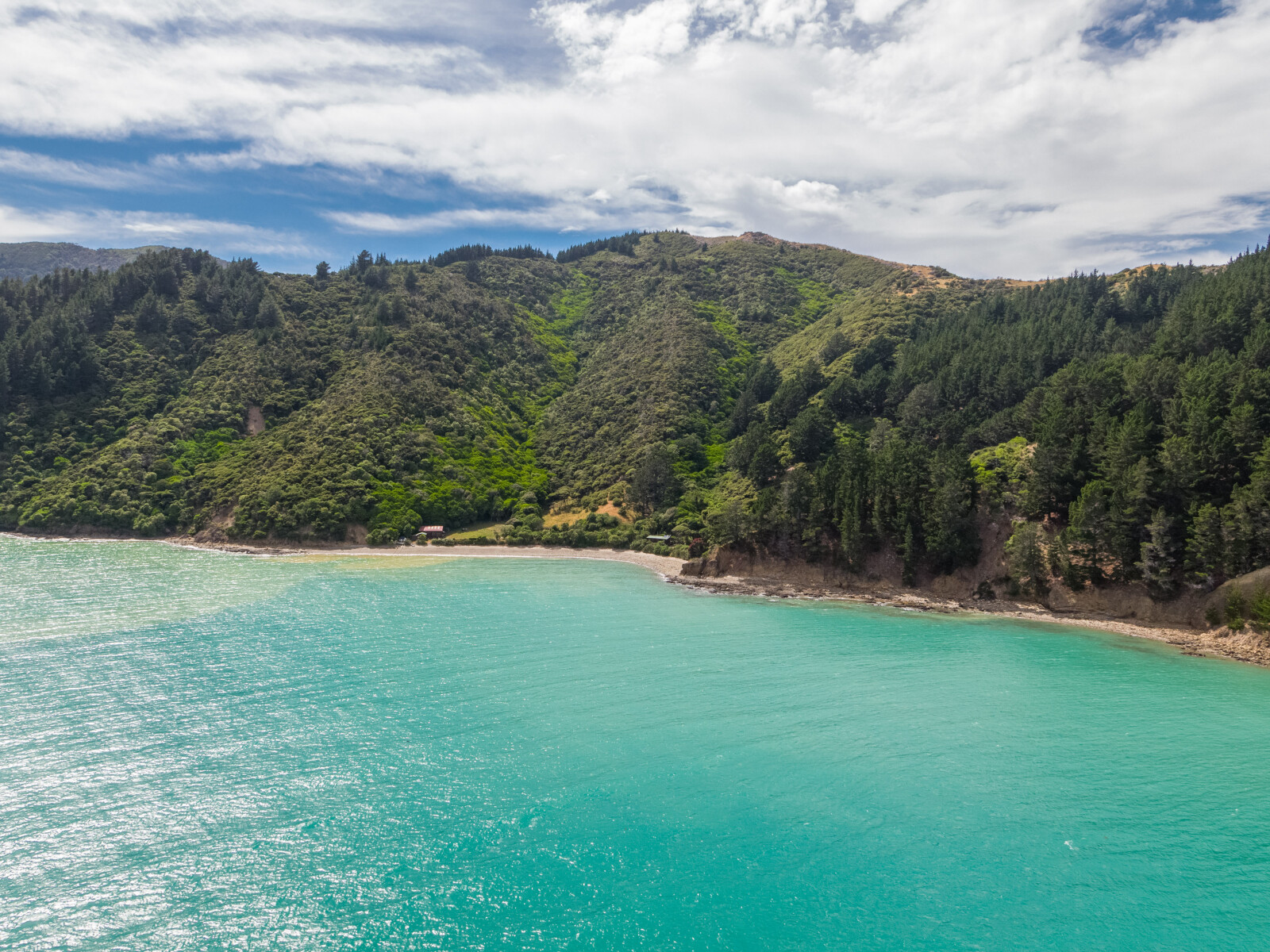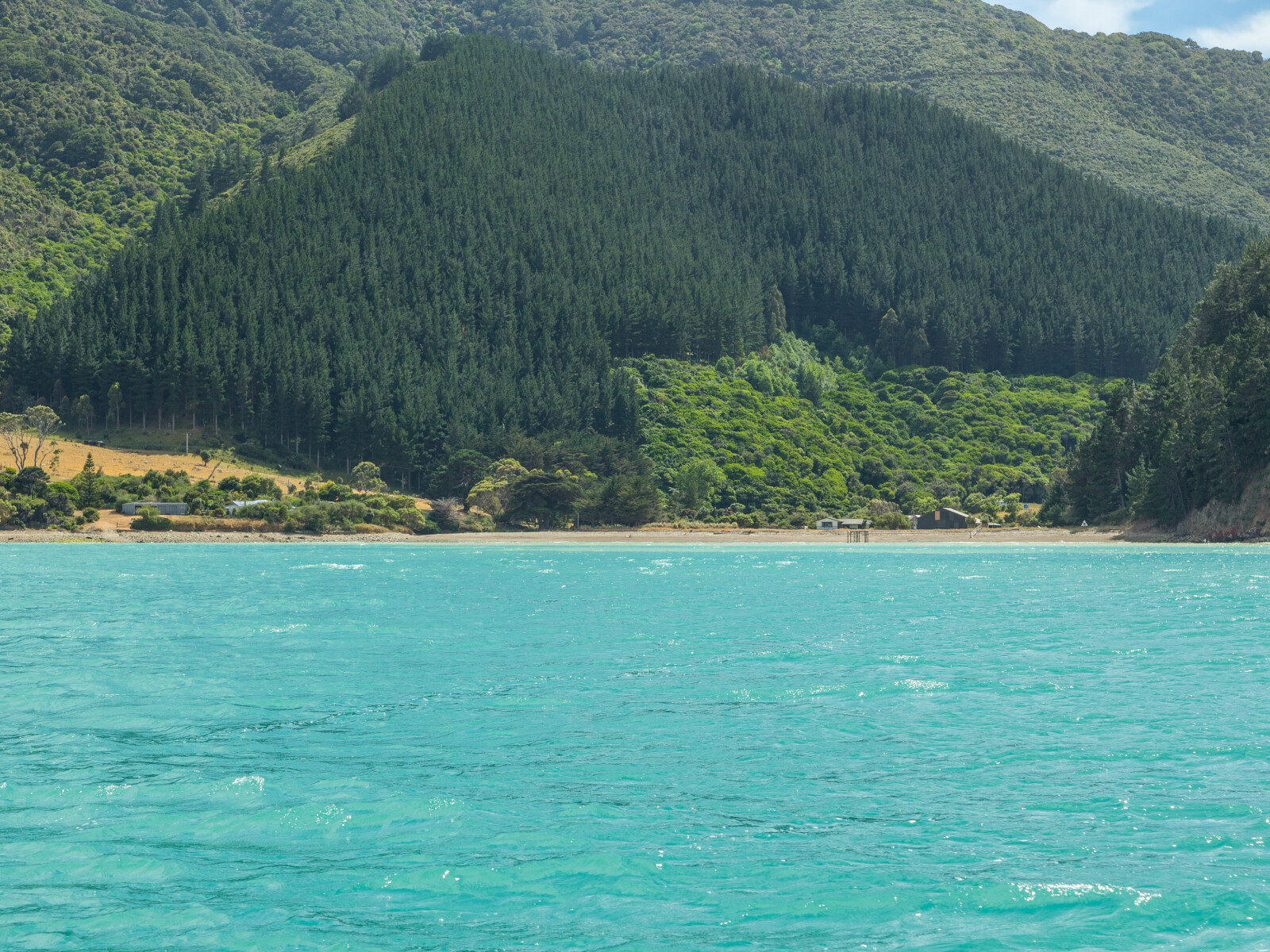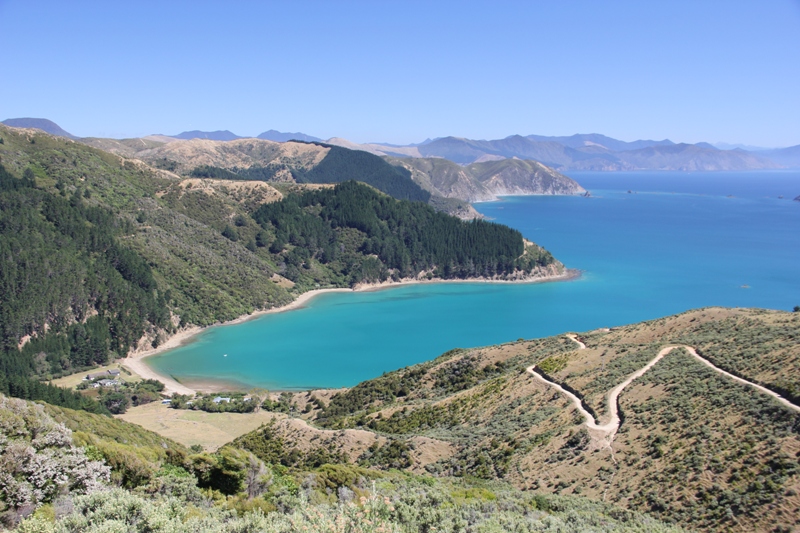Kupe Bay is named from an abbreviation of the larger bay’s name, Manuhakapakapa.
A homestead is located in this bay.
To the south of the bay is a point known as Iron Pot Point. It was named after an old whaling pot that was found lying in the scrub.1
In 1973 at Iron Pot Point a rare fossil of an extinct marine mollusc known as an ammonoid was located by J. B. Waterhouse.
The ammonoid species was named d’Urvilleoceras Woodmani Waterhouse.2
The discovery of this fossilised species was significant as it ignited scientific debate around the geological origin of the sandstone and limestone rock that makes up a significant proportion of Rangitoto ki te Tonga / D’Urville Island.
Geologists wanted to clarify whether the bedrock, known as the Greville Formation of the Maitai Group, was created during the Late Permian (298.9 million to 251.9 million years ago) or early Triassic Period (251.9 million to 50.6 million years ago).3
By the early 2000s it was established that the Maitai Group belonged to the Early Triassic Period. Accordingly a separate New Zealand geologic timescale stage, the Nelsonian Stage was created. This stage, with a duration of 8 million years was defined to more accurately identify and date rocks containing minimal fossil remains, such as the Greville Formation of the Maitai Group.
The fossil species, d’Urvilleoceras, an example of which was found at Iron Pot Point is now used to identify Nelsonian Stage rocks, including sequences of Matai Group rocks.4
1. Olive Baldwin, Story of New Zealand’s French Pass and d’Urville Island (Plimmerton: Fields Publishing House, 1979) 136.
2. Waterhouse, J. B. “An Ophiceratid Ammonoid from the New Zealand Permian and Its Implications for the Permian–Triassic Boundary.” Geological Magazine, 110:4, (1973), 305–29. Accessed, May 22, 2018, https://doi.org/10.1017/S0016756800048202 .
3. D.D.L. Pillai , C. A. Landis , N. D. J. Cook & H. J. Campbell, “Permian ammonoids from the Greville Formation, Upukerora valley, Southland”, New Zealand Journal of Geology and Geophysics, 34:3, (1991), 365-372. Accessed May 22, 2018, https://doi.org/10.1080/00288306.1991.9514475 .
4. H. J. Campbell & S. R. Owen, “The Nelsonian Stage: A new Early Triassic local stage for New Zealand”, Journal of the Royal Society of New Zealand, 33:1, (2003), 97-108. Accessed May 22, 2018, https://doi.org/10.1080/03014223.2003.9517723 .





